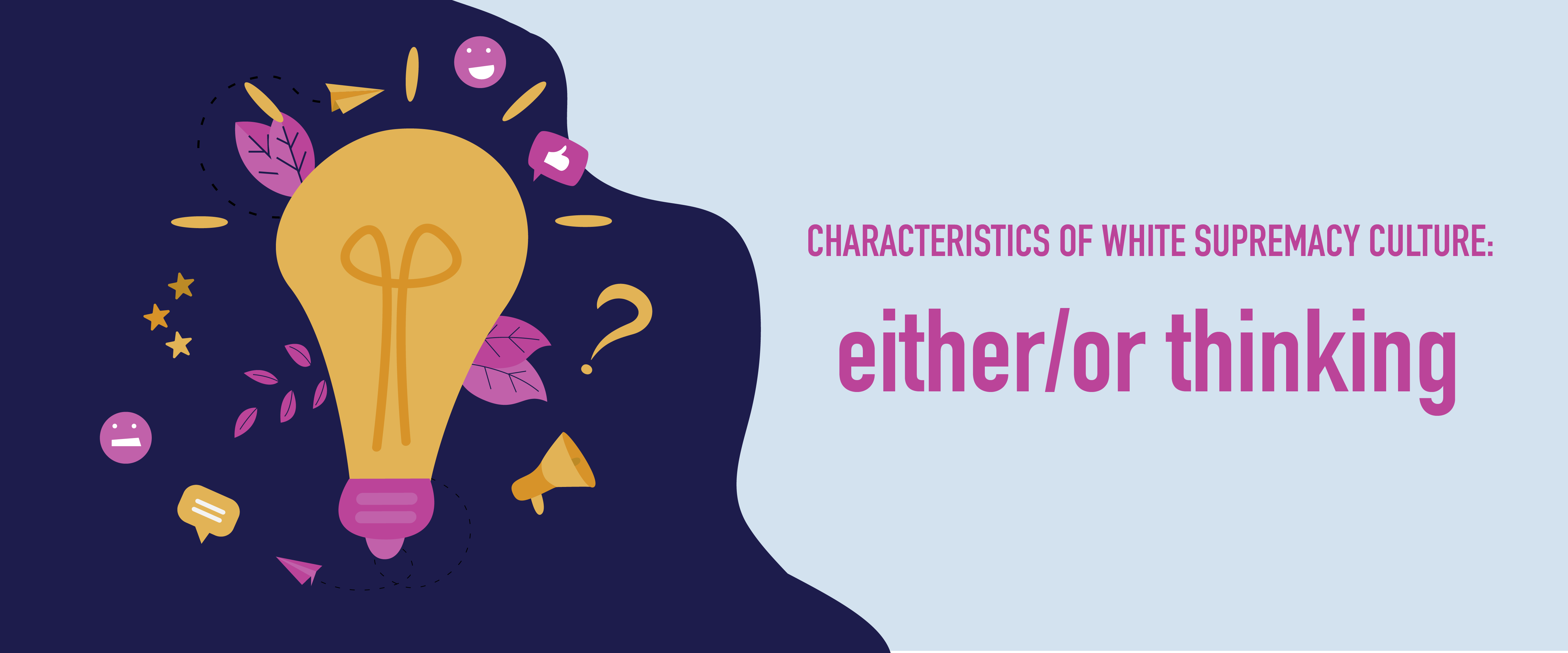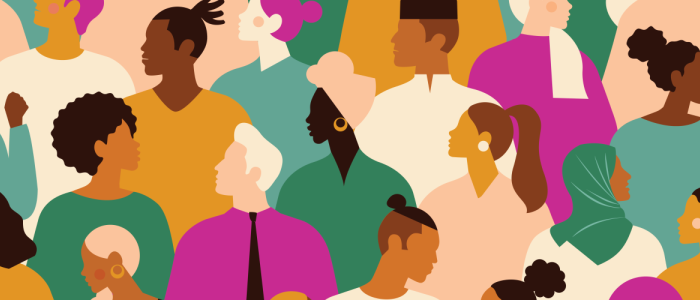
Analyzing white supremacy culture in the workplace: Either/or thinking
Sep 27, 2022
This blog is a part of a series highlighting the 13 characteristics of white supremacy culture.
What is white supremacy culture?
To give you a quick refresher from our previous blog in this series:
White supremacy culture builds upon the definition of white supremacy — thinking white people and their ideas, thoughts, beliefs and actions are better than people of color and their ideas, thoughts, beliefs and actions — and expands it by infiltrating our beliefs, values, norms, standards of our groups (many if not most of them), our communities, our towns, our states and our nation, teaching us both overtly and covertly that whiteness is valuable, that whiteness holds value, and that in order for anyone to gain value, they must utilize whiteness to do so.
Deconstructing the characteristics of white supremacy culture
There are 13 main characteristics of white supremacy culture:
- Paternalism.
- Perfectionism.
- Either/or thinking.
- Fear of open conflict.
- Objectivity.
- Quantity over quality.
- Worship of the written word.
- Defensiveness.
- Power hoarding.
- Individualism.
- Right to comfort.
In this post, we will talk about either/or thinking and how it affects the workplace, as well as communications and communication in public relations and marketing..
Either/or thinking: The fallacy of choice
In either/or thinking — also known as binary thinking — people feel they have to decide whether to do this OR that, without time or encouragement to consider alternatives, particularly those that may take more time and resources.
It’s a concept used by those with a clear agenda or goal to compel those still thinking or considering to choose between options A and B without acknowledging more options must be considered. While in reality, there are many shades of gray to consider, this fallacy presents a black-and-white perspective.
By using either/or thinking, we pit oppressions against one another instead of acknowledging the ways in which forms of oppression intersect, such as the way racism and classism intersect with heterosexism and ageism and other forms of oppression.
The delivery of critiques to coworkers is a typical example of this. Traditionally, you would have two options: to be soft and evasive, or to be blunt and straightforward. Even though both methods of communicating have significant downsides, common ground can be found that incorporates a choice of language that isn't demeaning, as well as concise instructions for how that person can improve in their weaker areas. Despite that, people are often told to just "rip the band-aid off" when delivering "bad" news, resulting in a strain on the morale of the team. The way we communicate with team members and stakeholders matters highly, since we can cause real harm beyond morale with our approach and language. As communicators, we must explore all the options we have at our disposal to deliver messages in the most effective and least harmful ways possible. As a result, we should avoid using language that is micro or macro-aggressive as well as discriminatory language that can have unintentional repercussions.
Dismantling binary thinking: “I” statements
The use of "I" statements is one strategy for delivering messaging. Through the use of "I" statements, we can dismantle binary thinking. Speaking in generalizations often leads to alienation. Here’s what that can look like in action:
During a gathering or meeting, when someone says how well the group is establishing trust — and I personally don't feel trusted or I know someone in the group is struggling — that simple generalization causes (often unintentional) disconnections. Instead of putting someone in the position of having to respond, “There is no trust established” or “Some of us don’t feel this way,” the speaker can say, "I feel a sense of trust" without claiming the experience of everyone in the group is the same. Underrepresented communities often suffer from this issue because organizations tend to unintentionally lump them together into a monolithic state, assuming that all community members have had the same experience when one person speaks out or tells their personal story. By doing so, it undermines the complexity and uniqueness of each individual’s journey that contributes to their identity, which is extremely harmful.
Moreover, speaking for ourselves deepens our self-awareness as we learn to claim our own personal experiences and not those of the group. We also strengthen our communication competencies by stating we are not speaking on behalf of the group but for ourselves alone.
To learn more about the characteristics of white supremacy culture, please refer to the Dismantle Racism homepage for more information.


